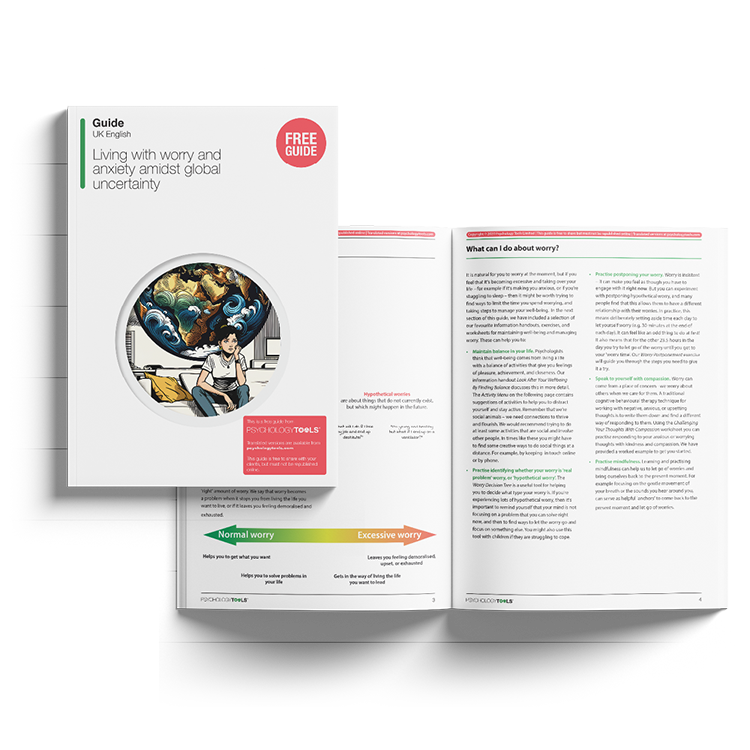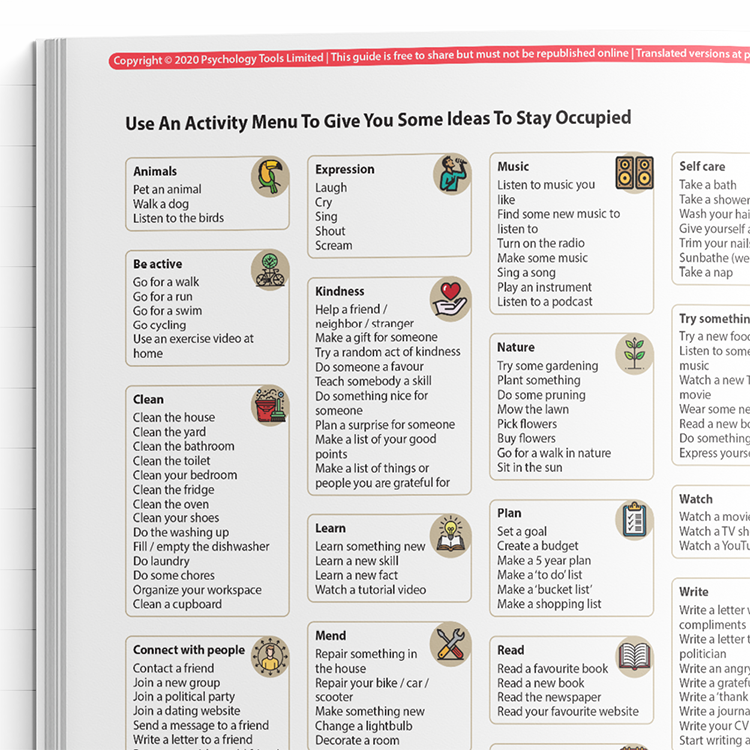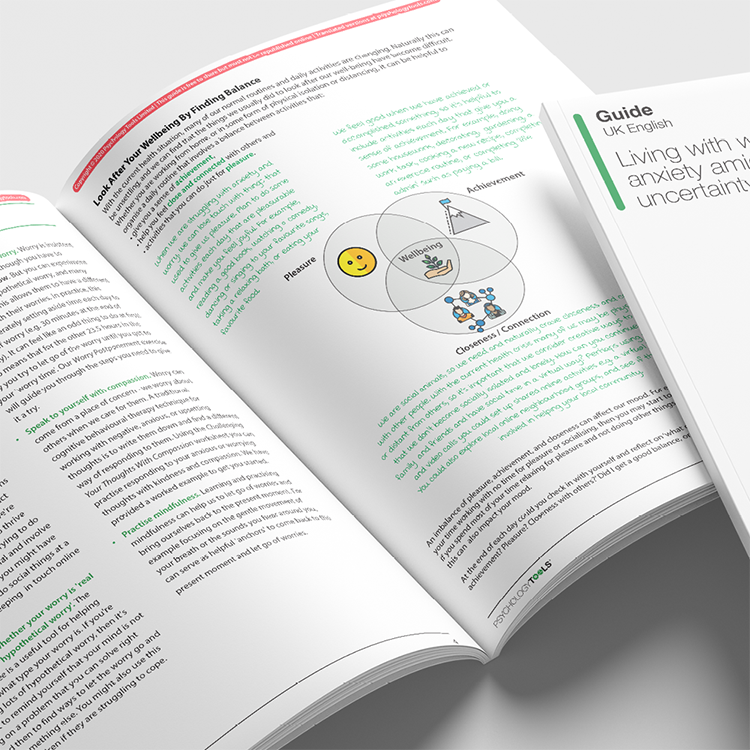Free Guide (PDF)
A free psychoeducational guide. Typically containing elements of skills development.
First published in 2020 during the global pandemic, this guide aimed to help people manage worry and anxiety during a time of global uncertainty.

A free psychoeducational guide. Typically containing elements of skills development.
To use this feature you must be signed in to an active account on the Advanced or Complete plans.

In times of rapid change and unsettling news, worry and anxiety can become overwhelming. This free guide, created by Psychology Tools, provides strategies, exercises, and worksheets to help people manage worry and anxiety effectively. It emphasizes self-care, compassion, and maintaining balance during uncertain times.
Managing anxiety amidst global uncertainty can be challenging. This resource provides:
This free guide was designed for everyone.
Help people to identify whether their worries concern real or hypothetical problems.
Encourage activities that balance pleasure, achievement, and connection.
Teach worry postponement to alleviate daily stress.
Use mindfulness to anchor clients in the present.
Promote compassionate self-talk to counter negative thoughts.
Assist people in maintaining regular daily routines for stability.
This guide is informed by cognitive behavioral therapy (CBT) principles, focusing on how thoughts influence feelings and behaviors. It offers insights on managing both real and hypothetical worries, using cognitive restructuring to achieve a more balanced and less anxious perspective. The guide emphasizes the importance of balance in one's activities to enhance overall well-being and reduce anxiety levels.
Readers are encouraged to explore their worries through deliberate postponement, distinguishing between actionable concerns and those that are speculative. Compassionate thought challenging is also highlighted as a technique to promote self-kindness and reduce self-critical thoughts. The guide supports the use of mindfulness as a method to keep clients present-focused, mitigating the tendency to engage in catastrophic thinking.

Just enter your name and email address, and we'll send you [Free Guide] Living With Worry And Anxiety Amidst Global Uncertainty (English US) straight to your inbox. You'll also receive occasional product update emails wth evidence-based tools, clinical resources, and the latest psychological research.
Working...
This site uses strictly necessary cookies to function. We do not use cookies for analytics, marketing, or tracking purposes. By clicking “OK”, you agree to the use of these essential cookies. Read our Cookie Policy